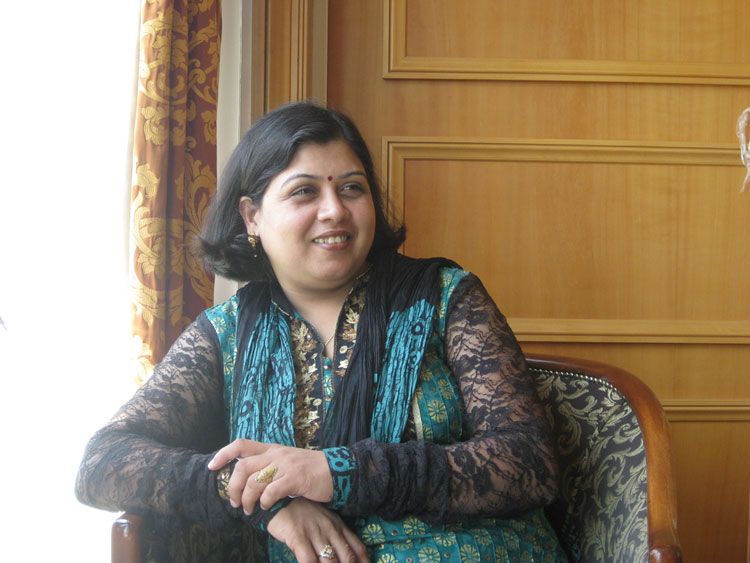 In the television series Star Trek, virtual reality-chambers called “holodecks” take humans into computer-generated worlds where they interact with avatars — and with each other. Imagine being able to visit a distant planet or Tahiti during your lunch break. In Star Trek, holodecks come into existence in the 24th century and reproduce all sensory perceptions, including touch and smell.
In the television series Star Trek, virtual reality-chambers called “holodecks” take humans into computer-generated worlds where they interact with avatars — and with each other. Imagine being able to visit a distant planet or Tahiti during your lunch break. In Star Trek, holodecks come into existence in the 24th century and reproduce all sensory perceptions, including touch and smell.
Chambers that replicate the touch and feel of solid materials are still a decade or two away. But virtual reality worlds that are amazingly similar to what we saw in Star Trek are already here. Hundreds of companies are working on virtual reality hardware, software, applications and content. I expect that 2016 will be the year when we start visiting exotic lands from the comfort of our offices and living rooms.
There are several technology developments which are bringing the future to us ahead of the Star Trek schedule. For starters, there is what is called “full-immersion virtual reality.” These are systems that take us out of the real world, into an entirely different digital realm. We hear stereo sounds and see panoramic displays that are so convincing that users lose track of time and space (they also, until very recently, suffered from serious nausea and motion sickness). Facebook’s Oculus Rift is the leading immersive virtual reality (VR) system but numerous others are either on the market or in the works.
These systems will allow us to walk virtually on the surface of another planet, play laser tag with a friend 3,000 miles away, or watch one of the world’s greatest heart surgeons perform an operation as if we were looking over her shoulder. The costs of the headsets are dropping even as quality is soaring. High-quality full-immersion VR goggles already cost as little as $100 and incorporate high-definition displays. The next generation of full-immersion VR systems will use special platforms that allow us to simulate walking and other movements without actually endangering ourselves or moving very far. (You can imagine the hazard of full-immersion VR participants walking into doors, walls, or falling down stairs).
Another flavor of VR is called “augmented reality” (AR). Unlike full-immersion VR, augmented reality overlays images, text, or other information atop the real world. Google Glass was an early and relatively simple version of this. Microsoft’s soon-to-be-released HoloLens takes AR to an entirely new level. For example, aerospace engineers can put on the Hololens and interact with physical models of a jet engine even as the AR system overlays digital images of additional engine parts or components. Or a medical student can interact with a 3D model of a human body that is overlaid atop a physical human skeleton. In this way, AR will let everyone get digital guidance in three-dimensions. A holographic helpdesk will bring the world to life by adding key information not readily accessible in the physical world.
A highly touted start-up, Magic Leap, is building an AR headset that will beam images directly onto the surface of the human eye using depth perception techniques that make it seem as if the 3D object is far away. Over time, these systems will shrink in price and size. We will have AR devices embedded in our eyes or in contact lenses and glasses. We will live in a world where a “heads-up” display is always before our eyes, if we so choose.
Microsoft is working on multi-person AR systems that allow people to interact with each other and share experiences. Imagine going on vacation with your family and friends, attending holographic video conferences and concerts, or playing games together. A Silicon Valley start-up, CrowdOptic, has built and deployed software that can process multiple video streams from people wearing Google Glass to learn what they are focusing on and observing. The technology works by capturing, filtering, and enhancing sensor data from a large number of devices and is currently being used indoctor’s offices, sports stadiums, and in training programs across the country.
While headsets and goggles are amazingly cool, we need to generate three-dimensional imagery and content to build new VR and AR applications. Fortunately, the hardware for this is already coming on fast, too. JauntVR has made a three-dimensional camera system that automatically shoots and weaves together images from numerous video cameras, providing a 360-degree view of the situation. Jaunt is working with major television studios such as ABC to generate fully-immersive VR content for news teams.
The impact of these advances will be huge — and disruptive to many industries. First there is entertainment. Who will want to watch the seemingly tiny IMAX screens and TV sets when you can live the entire experience as if you were there? The next generation of entertainment will allow the audience to be part of the cast or a salient observer. The real estate industry will be disrupted by virtual neighborhood walk-throughs in real time using surrogate robots. It will become unnecessary to travel to conferences in exotic locations when we can all be there virtually. And most significantly, the way we interact with our computers will change. Who will want to use a primitive mouse and keyboard when they can have displays such as what we saw in the film Minority Report?
Yes, it will be surely nice to be able to smell the sea and taste the exotic fruits. But for the moment, let’s be happy visiting Mars and exploring the depth of the oceans.
Link to article on Washington Post’s website
| About Author | |

|
Vivek Wadhwa is Vice President of Innovation and Research at Singularity University; Fellow, Arthur & Toni Rembe Rock Center for Corporate Governance, Stanford University; Director of Research at the Center for Entrepreneurship and Research Commercialization at the Pratt School of Engineering, Duke University; and distinguished visiting scholar, Halle Institute of Global Learning, Emory University. He is author of ”The Immigrant Exodus: Why America Is Losing the Global Race to Capture Entrepreneurial Talent”–which was named by The Economist as a Book of the Year of 2012. Wadhwa oversees the academic programs at Singularity University, which educates a select group of leaders about the exponentially growing technologies that are soon going to change our world. These advances—in fields such as robotics, A.I., computing, synthetic biology, 3D printing, medicine, and nanomaterials—are making it possible for small teams to do what was once possible only for governments and large corporations to do: solve the grand challenges in education, water, food, shelter, health, and security. |
Website: http://wadhwa.com/2015/10/22/get-ready-virtual-reality-is-arriving-well-ahead-of-star-treks-far-future-forecast/
Disclaimer: Please use this channel at your own discretion. These articles are contributed by our users. We are not responsible or liable for any problems related to the utilization of information of these articles.











